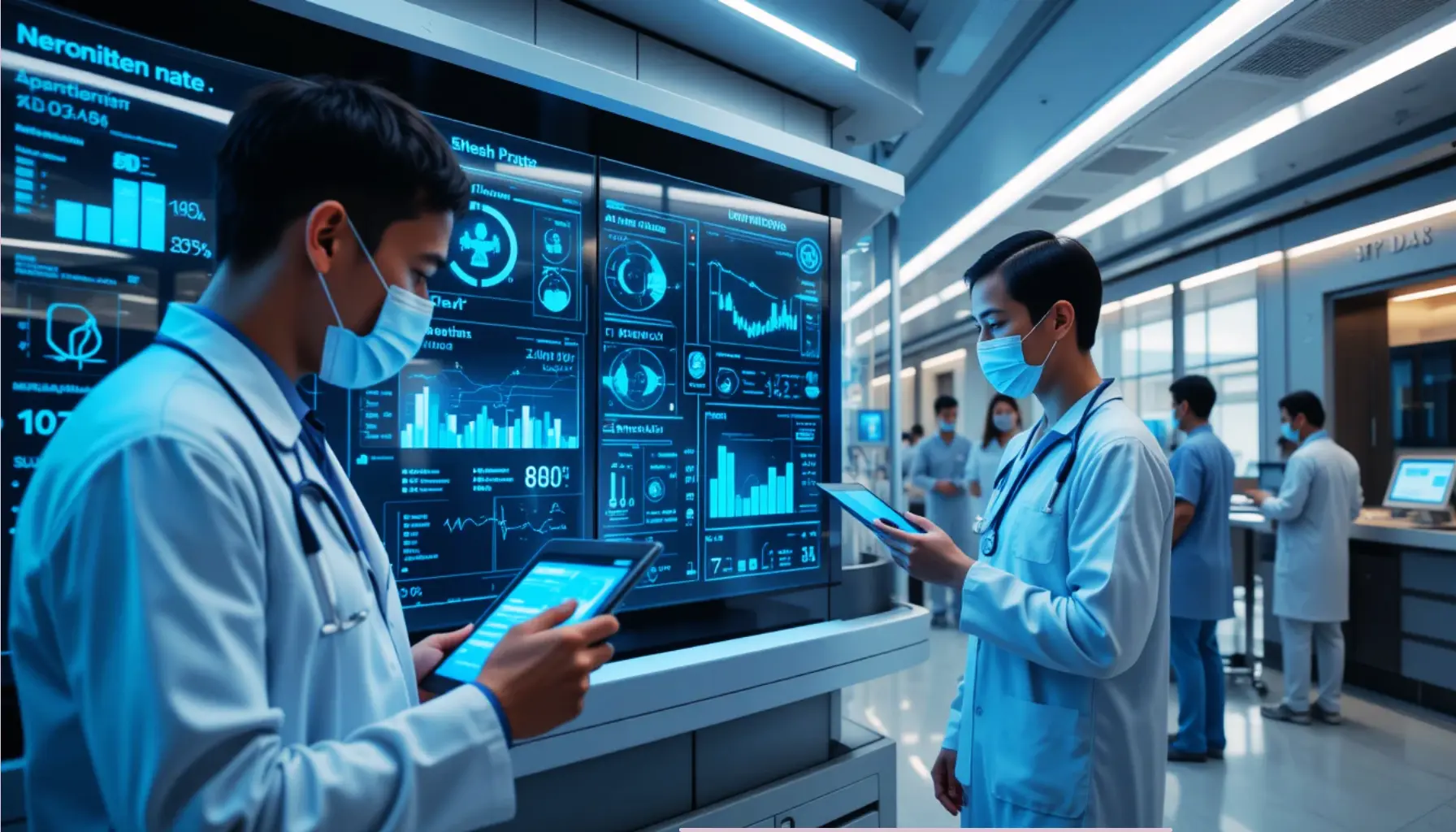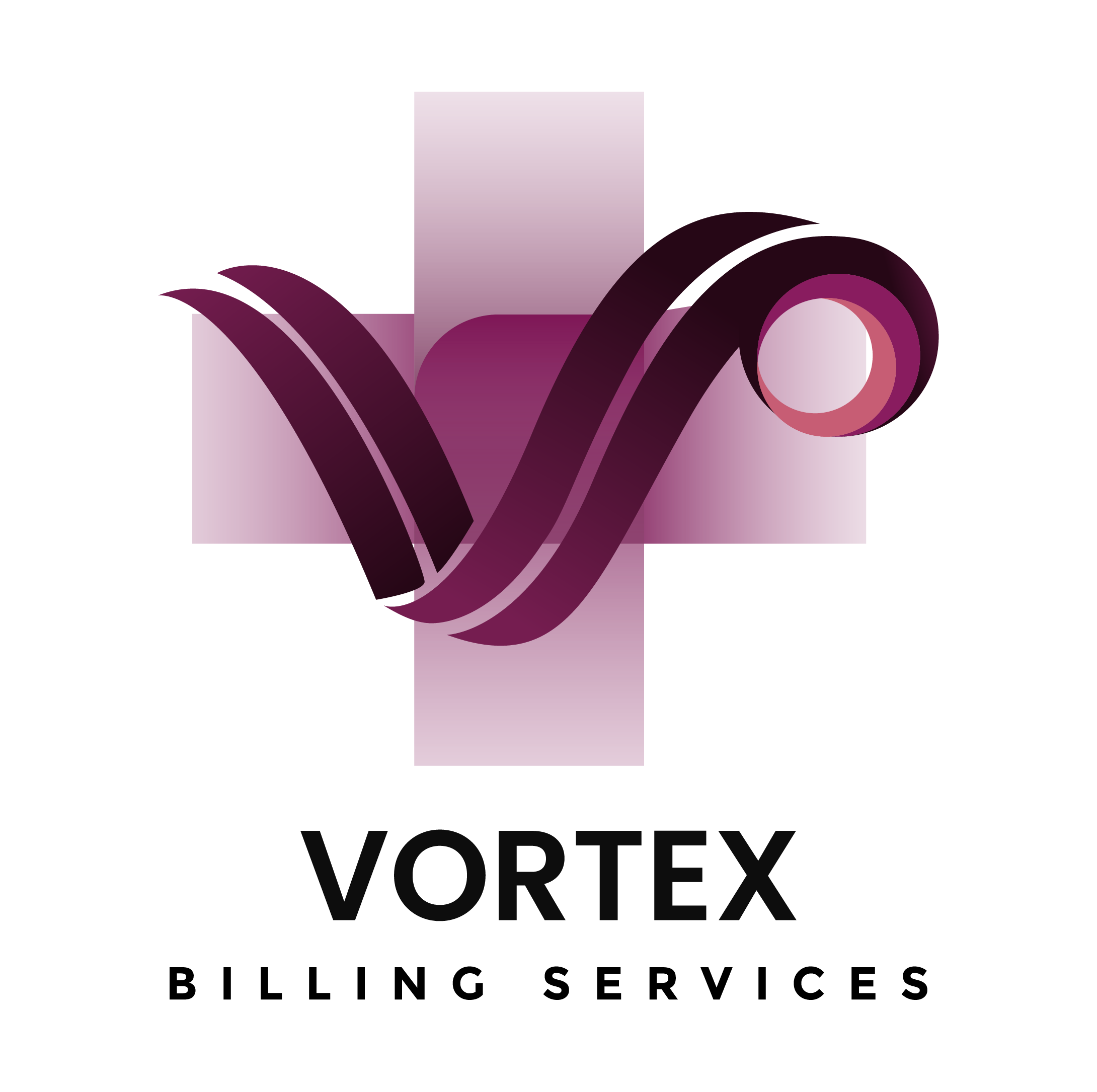The 2025 Healthcare Storm: Navigating Revenue Cycle Management Challenges
In 2025, the healthcare industry is facing a storm of changes and challenges, especially in the area of revenue cycle management. As payer rules evolve, patient financial responsibility increases, and staffing issues mount, the pressure on healthcare providers is higher than ever. The question is: how can you stay financially healthy amidst all this chaos? The answer lies in adopting the right RCM solution.
An advanced RCM solution not only helps medical practices in the U.S. streamline operations but also ensures faster reimbursements, compliance with regulatory changes, and greater transparency. It’s no longer just about billing and coding—it’s about building a financially sustainable ecosystem that empowers providers to focus on care instead of collections.
If you’re part of a U.S.-based clinic, hospital, or private practice, now is the time to rethink your revenue cycle strategy. Let’s explore the biggest Revenue Cycle Management Challenges in 2025—and how to beat them with the right RCM solution.
Understanding the Core of RCM in Modern Healthcare
What is Revenue Cycle Management (RCM)?
Revenue Cycle Management (RCM) is the lifeblood of any healthcare organization. It’s the end-to-end process that covers patient registration, insurance verification, charge capture, coding, billing, claims submission, payment posting, denial management, and collections. A hiccup in any part of this cycle can lead to serious revenue leakage.
By 2025, RCM has transformed from a backend function to a strategic financial discipline. It’s no longer just the domain of the billing department; it now involves cross-functional teams, advanced technologies, and a proactive approach to optimizing every financial transaction in the patient care journey.
In this modern landscape, an effective RCM solution must address not just basic billing, but also the growing complexity of insurance reimbursements, patient engagement, compliance requirements, and data security.
Importance of RCM in 2025 Healthcare Landscape
Healthcare in the USA is more consumer-driven than ever. Patients expect clarity in billing, real-time access to their financial responsibilities, and flexibility in payments. At the same time, payers are tightening rules, creating more hurdles for providers to get reimbursed on time. If your RCM isn’t keeping up, you’re leaving money on the table—and possibly putting your practice at risk.
The shift toward value-based care, telehealth expansion, and increased regulatory oversight have added layers of complexity to traditional RCM workflows. Medical practices need a RCM solution that is intelligent, adaptable, and built for speed. Especially with the growing trend of high-deductible plans, managing patient payments efficiently is now a frontline priority.
A modern RCM solution enables providers to automate manual tasks, eliminate errors, and track every dollar from scheduling to final payment. In 2025, not having such a system isn’t just inefficient—it’s risky.
Major Revenue Cycle Management Challenges in 2025
Increasing Complexity in Payer Rules and Regulations
One of the most pressing issues in 2025 is the ever-changing world of payer rules. Insurance companies are updating policies more frequently, with intricate pre-authorization processes, bundled payment models, and tighter documentation requirements. The result? A mountain of denied claims, delayed payments, and frustrated administrative staff.
Providers must stay constantly informed to ensure accurate coding and timely submission. But keeping up with this sea of changes manually is nearly impossible. Without a tech-driven RCM solution, the risk of non-compliance, underpayments, and write-offs skyrockets.
Furthermore, government programs like Medicare and Medicaid continue to evolve with new billing standards. HIPAA compliance and patient data privacy also demand stringent oversight. A smart RCM solution equipped with real-time compliance updates is no longer optional—it’s essential for survival.
Staffing Shortages and Administrative Burnout
The healthcare industry is currently battling a severe workforce shortage. Skilled billing professionals, coders, and administrative staff are hard to find and even harder to retain. For small practices, this challenge is even more daunting.
Administrative burnout is also real. Repetitive manual data entry, tracking down missing documentation, appealing denials, and managing patient inquiries take a toll. By 2025, this problem has only worsened, especially with the growing complexity of healthcare administration.
An effective RCM solution can drastically reduce the burden on your staff. With automation, AI-powered claim scrubbing, and intelligent workflow management, practices can do more with fewer people—without compromising accuracy or speed.
The right technology not only fills staffing gaps but also enhances employee satisfaction by removing repetitive grunt work, allowing your team to focus on higher-value tasks like patient communication and financial counseling.
Delayed Reimbursements and Cash Flow Disruptions
Cash flow is king in any business, and healthcare is no exception. Yet, in 2025, many providers face chronic delays in payments due to claim denials, slow processing, and incorrect coding. This affects everything—from staff payroll to investments in new equipment.
Traditional billing systems often fail to flag issues early, causing bottlenecks that take weeks or even months to resolve. A missed modifier, a mismatched code, or a lack of documentation can mean the difference between getting paid and chasing dollars.
With a robust RCM solution, providers gain real-time visibility into the claims process. Intelligent automation catches errors before claims are sent, while dashboards and reporting tools help monitor key metrics like Days in AR, denial rates, and net collections.
Fast and accurate reimbursement isn’t just a nice-to-have—it’s the backbone of operational health. By proactively managing the revenue cycle through modern tools, providers can ensure steady cash flow and financial stability even in uncertain times.
Why Traditional RCM Systems Fail in 2025
Legacy System Incompatibilities
Many healthcare providers still rely on outdated legacy systems that are ill-equipped to handle the demands of 2025. These systems were designed in an era where patient volumes were lower, billing rules were simpler, and the idea of real-time data exchange was far-fetched. Today, they are the digital equivalent of trying to navigate a Tesla with a flip phone.
Legacy systems often lack integration capabilities with modern EHRs, payer platforms, and patient portals. This creates data silos, forces duplication of efforts, and increases the chances of human error. When systems can’t “talk” to each other, it results in delayed billing, inaccurate patient information, and missed follow-ups.
What’s worse is that these systems often come with hefty maintenance costs, rigid interfaces, and limited scalability. If your practice is growing—or planning to grow—a legacy system can quickly become a financial anchor. A modern RCM solution integrates seamlessly with other healthcare IT platforms, ensuring a smooth, error-free flow of data across departments.
The ability to adapt to change is crucial in 2025. Legacy systems fail because they can’t evolve quickly enough to keep up with new billing codes, payer mandates, and compliance regulations. A tech-forward RCM solution provides cloud-based infrastructure, real-time updates, and predictive capabilities that are mission-critical for long-term success.
Lack of Real-Time Data and Predictive Analytics
The old saying “what gets measured, gets managed” holds especially true in revenue cycle management. Unfortunately, traditional systems offer limited or delayed reporting capabilities. Without real-time insights into claim statuses, denial reasons, patient balances, and payer trends, healthcare providers are left playing a guessing game.
In 2025, the pace of decision-making in healthcare has accelerated. Practice managers need to know which payers are underpaying, which procedures are facing repeated denials, and which patients are overdue on their payments—all in real time. A reliable RCM solution leverages business intelligence and predictive analytics to provide actionable insights that drive better outcomes.
Imagine being able to forecast your monthly cash flow, identify bottlenecks in your billing process, and receive alerts about denial spikes—before they affect your revenue. That’s the power of predictive analytics. It turns your RCM from reactive to proactive, helping you address issues before they snowball into larger problems.
With dashboards, KPI tracking, and automated reports, modern RCM platforms empower decision-makers to optimize processes, allocate resources efficiently, and drive continuous improvement across the board.
Inefficiencies in Manual Processes
If your staff is still printing forms, manually keying in patient data, or calling insurance companies for claim statuses, your revenue cycle is bleeding money and time. Manual processes are slow, error-prone, and a prime source of burnout.
In 2025, these inefficiencies are no longer acceptable. Patients expect quick digital experiences, payers demand precision, and staff need smart tools—not tedious chores. Every manual touchpoint in your RCM increases the chance of error, whether it’s incorrect patient info, mismatched codes, or missing documentation.
The most advanced RCM solution eliminates these inefficiencies with automation. From appointment scheduling to eligibility checks, from charge capture to claims follow-up—automation speeds things up while reducing mistakes. And it doesn’t just benefit the back office. Patients enjoy faster billing turnaround times, clearer financial summaries, and easier payment options.
Let’s face it: manual tasks belong in the past. With the right RCM technology, practices can streamline workflows, scale without extra headcount, and provide a superior financial experience for both staff and patients.
How the Right RCM Solution Can Address 2025 Challenges
End-to-End Automation and AI-Powered Tools
The key to solving modern RCM problems lies in automation and artificial intelligence. With the massive volume of data processed daily, relying on manual processes is like trying to row a boat with one paddle—you’ll only go in circles.
A cutting-edge RCM solution brings end-to-end automation to the entire revenue cycle. Patient data is verified automatically at the point of scheduling. Eligibility is checked in seconds. Claims are scrubbed using AI algorithms that spot missing codes, incorrect modifiers, and policy violations before submission.
AI also plays a huge role in denial management. Instead of having a team manually sift through denials, the system learns from past outcomes, identifies root causes, and suggests the best correction path. Over time, this means fewer denials and faster reimbursements.
Even collections are smarter in 2025. AI tools predict which patients are most likely to pay, enabling practices to tailor communication and follow-up strategies. It’s efficient, patient-friendly, and drives better financial performance across the board.
This isn’t science fiction—it’s the new standard. If your current RCM process lacks intelligent automation, you’re operating at a competitive disadvantage.
Improved Compliance and Data Security
With cyber threats on the rise and HIPAA regulations tightening, compliance and data security are more important than ever. Healthcare organizations in 2025 must handle vast amounts of sensitive data—from insurance details to payment records—and any breach can be catastrophic.
A best-in-class RCM solution includes built-in security protocols, regular compliance updates, and encryption tools that protect patient data throughout the billing lifecycle. Whether it’s secure file transfers, two-factor authentication, or automated audit logs, top-tier platforms are designed with compliance at their core.
Furthermore, modern solutions stay ahead of regulatory changes by updating systems automatically, helping providers avoid costly penalties. This is especially important for practices operating across multiple states or those dealing with government payers like Medicare and Medicaid.
Trust is everything in healthcare. Patients expect their data to be secure, and providers need peace of mind that their systems won’t expose them to unnecessary risks. A modern RCM solution makes security and compliance seamless—not stressful.
Enhancing Patient Financial Experience
Today’s patients act like consumers. They want price transparency, flexible payment options, and real-time access to their billing information. If they don’t get it, they’ll switch providers. That’s why the patient financial experience is now a competitive differentiator.
A modern RCM solution offers digital tools that enhance this experience at every step. Patients can receive estimates before care, access itemized bills through a portal, pay via mobile apps, and even set up interest-free payment plans. These conveniences increase satisfaction and improve collection rates.
By removing friction from the billing process, providers can build trust and boost loyalty. Patients who feel respected and empowered financially are more likely to return—and to pay on time.
It’s not just about money—it’s about the overall relationship between provider and patient. With the right technology, you can make billing a seamless, positive part of your care delivery model.
Benefits of Adopting a Modern RCM Solution
Faster Reimbursement Cycles
One of the most immediate benefits of switching to a modern RCM solution is speed—especially when it comes to getting paid. In a traditional setup, it can take weeks or even months to receive reimbursements due to errors, missing documentation, and back-and-forth with insurance companies.
Modern RCM systems minimize these delays by automating every step of the claims lifecycle. From clean claim submission to real-time tracking and denial resolution, everything moves faster. With AI-assisted claim scrubbing, you’re sending cleaner claims the first time around, which significantly improves first-pass resolution rates.
In 2025, speed isn’t just about convenience—it’s about sustainability. Cash flow disruptions can cripple smaller practices and delay expansion for larger providers. By reducing the average Days in AR (Accounts Receivable), you unlock working capital that can be reinvested into patient care, staffing, or technology upgrades.
And don’t forget the impact on your staff. When the billing team isn’t bogged down by slow claim cycles, they can focus on more strategic tasks, like improving payer negotiations and strengthening patient communication.
The result? Quicker reimbursements, healthier finances, and a more agile healthcare business.
Greater Transparency and Reporting Accuracy
Transparency is vital in 2025. Medical practices, patients, and payers all demand clear, accurate, and timely information. Legacy systems often struggle to deliver this, but a robust RCM solution provides real-time reporting dashboards, automated analytics, and customizable KPIs.
With advanced reporting tools, you can track everything from denial rates to net collection ratios. You’ll know which payers are slow, which services are underperforming, and which team members are excelling. This level of insight empowers practice leaders to make informed decisions—not gut guesses.
Transparency also improves trust. When patients can view and understand their charges, there’s less confusion and fewer disputes. This, in turn, reduces administrative workload and increases on-time payments.
In addition, top-tier RCM platforms offer audit trails and access logs, ensuring compliance with healthcare regulations and improving accountability within the organization. Every action is documented, which is invaluable during internal reviews or external audits.
With a modern RCM solution, data isn’t just stored—it’s leveraged.
Reduced Operational Costs and Increased ROI
Let’s talk dollars and sense. While investing in a modern RCM solution might seem like a big upfront cost, the ROI it delivers is worth every penny. Why? Because automation replaces manual labor, errors are reduced, and collections improve.
Think about how many resources go into chasing unpaid claims, correcting billing errors, managing patient inquiries, and training staff on outdated systems. A technology-driven solution slashes these inefficiencies, saving thousands—if not hundreds of thousands—annually.
And the benefits extend beyond the billing department. Fewer denials mean happier patients. Accurate billing means fewer complaints. Less staff turnover means better team morale. It’s a win-win-win.
By implementing a scalable, cloud-based RCM platform, practices can also expand without worrying about outgrowing their infrastructure. Whether you’re opening a new location or integrating with another practice, the right system grows with you.
Ultimately, an advanced RCM solution turns your billing department into a profit center, not a cost sink.
Conclusion

As we navigate the complex healthcare landscape of 2025, the importance of efficient, intelligent, and adaptive revenue cycle management has never been clearer. The challenges—from ever-changing payer regulations and staffing shortages to delayed reimbursements and patient dissatisfaction—require more than just temporary fixes. They demand a complete transformation.
And that transformation starts with the right RCM solution.
Modern RCM technology is no longer a luxury—it’s a necessity. Whether you’re a solo practitioner, a growing clinic, or a multi-specialty healthcare group, investing in a powerful, end-to-end RCM platform ensures smoother workflows, stronger compliance, higher patient satisfaction, and—most importantly—better financial outcomes.
Don’t let outdated systems and inefficient processes hold you back. Choose a transparent, cost-effective, and technologically advanced RCM solution designed for the challenges of 2025 and beyond.
FAQs
1. What is the main challenge in revenue cycle management in 2025?
The biggest challenge is navigating the increasing complexity of payer regulations while managing limited staff and ensuring fast, accurate reimbursements.
2. How can an RCM solution help my practice grow?
An RCM solution automates billing tasks, improves claim accuracy, accelerates cash flow, and provides real-time insights that help you scale without added overhead.
3. Is an RCM platform secure and HIPAA-compliant?
Yes, top-tier RCM solutions are fully HIPAA-compliant and include advanced security measures like data encryption, secure cloud hosting, and access logs to protect patient data.
4. Can small practices benefit from RCM technology?
Absolutely. Smaller practices often see the biggest impact, as automation reduces administrative workload and enables them to focus more on patient care and growth.
5. What features should I look for in a modern RCM solution?
Look for end-to-end automation, AI-powered claim scrubbing, real-time reporting, seamless EHR integration, patient engagement tools, and strong compliance features.


